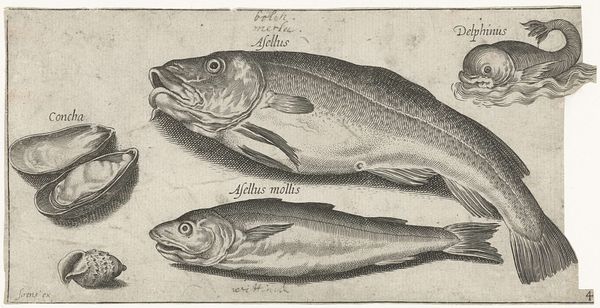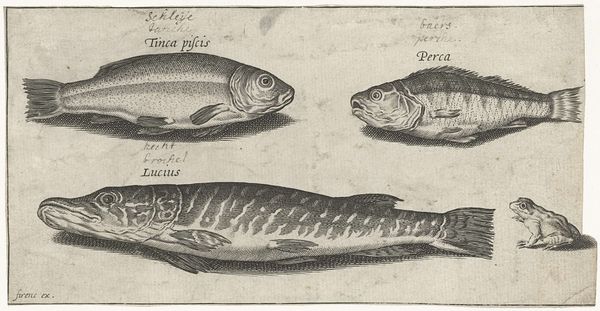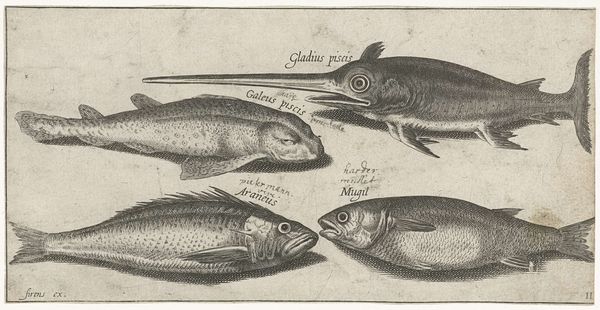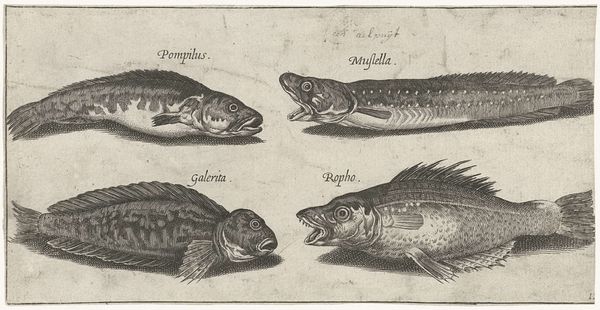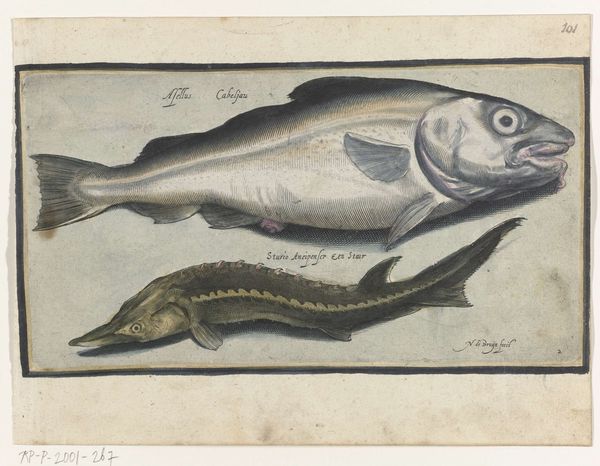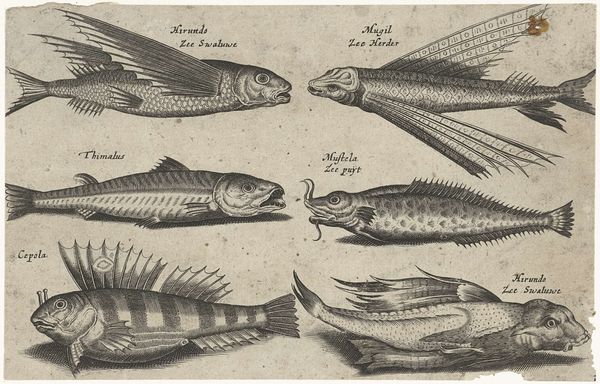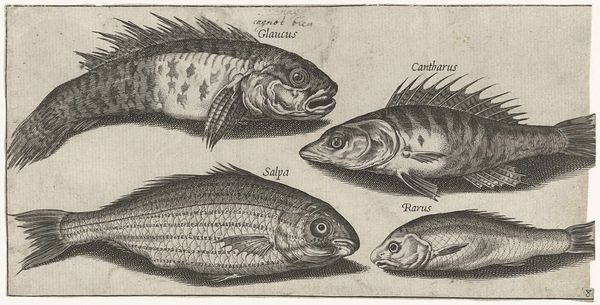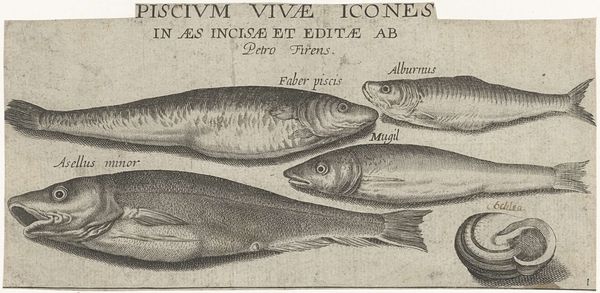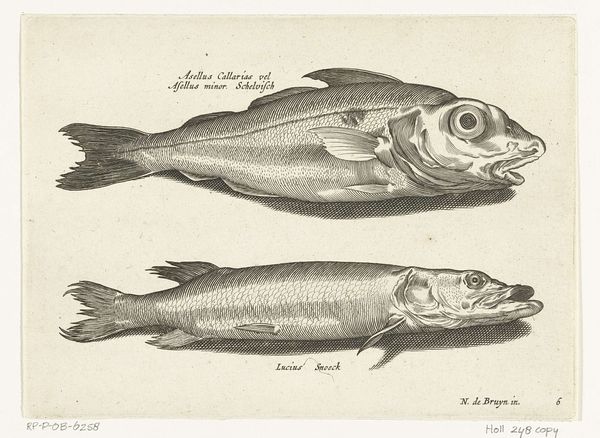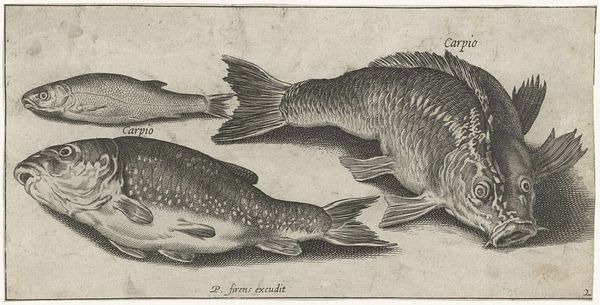
print, engraving
#
dutch-golden-age
# print
#
engraving
#
realism
Dimensions: height 93 mm, width 185 mm
Copyright: Rijks Museum: Open Domain
Curator: At first glance, this engraving by Pierre Firens feels almost clinical, like an illustration from an early biology textbook. There’s a strange serenity in its stark, detailed presentation of fish. Editor: I see it, that controlled observation! Let’s delve into "Zeebaars, tong en een zalm," created between 1600 and 1638. What story do these carefully rendered sea creatures tell us about their place and time? Curator: The Dutch Golden Age was booming commercially, right? This print screams abundance and scientific curiosity, very typical for its era. This abundance spills over to what became the popular genre of still life as well, laden tables with all manner of produce and food, emphasizing the availability of it. It represents more than just scientific curiosity to me. Editor: Absolutely, there’s an intersection here. Dutch society was reshaping its relationship to the natural world. I agree with your read, it reflects mercantile expansion and the Dutch engagement with a world of new resources. Beyond commercial appetite and abundance, can we see particular symbolic choices at work? Curator: Given the precision of the engraving, I can’t help but feel that each fish possesses a unique emotional or philosophical weight. The flatness, or lack of environmental context makes it clear to me the intent is primarily one of an accessible typology. But even there, aren't typologies in themselves an expression of ordering and value? A means for people to define and understand the world? Editor: It's a balancing act. The detailed realism pulls us toward an objective record. At the same time, displaying three specimens together inevitably asks us to make comparisons, to differentiate species based on their market value or even religious taboos, depending on the society that produced or encountered this print. We could explore its function as scientific illustration, but within the politics of imagery and taste, its symbolism would still shift. Curator: In our era, its cultural role shifts yet again. Now that some fish populations are under severe ecological pressure, something that might have once been seen as objective cataloging becomes an inadvertent historical record of vanishing biodiversity. A poignant contrast to what these images were probably initially intended to communicate! Editor: Indeed! Context changes everything, doesn't it? It encourages us to understand these early forays into realism as shaped by something beyond scientific observation and economic expansion. Curator: Food for thought, certainly, on this beautiful, strangely poignant piece! Editor: And for a historical slice of life, it really has sunk its hook in me!
Comments
No comments
Be the first to comment and join the conversation on the ultimate creative platform.
